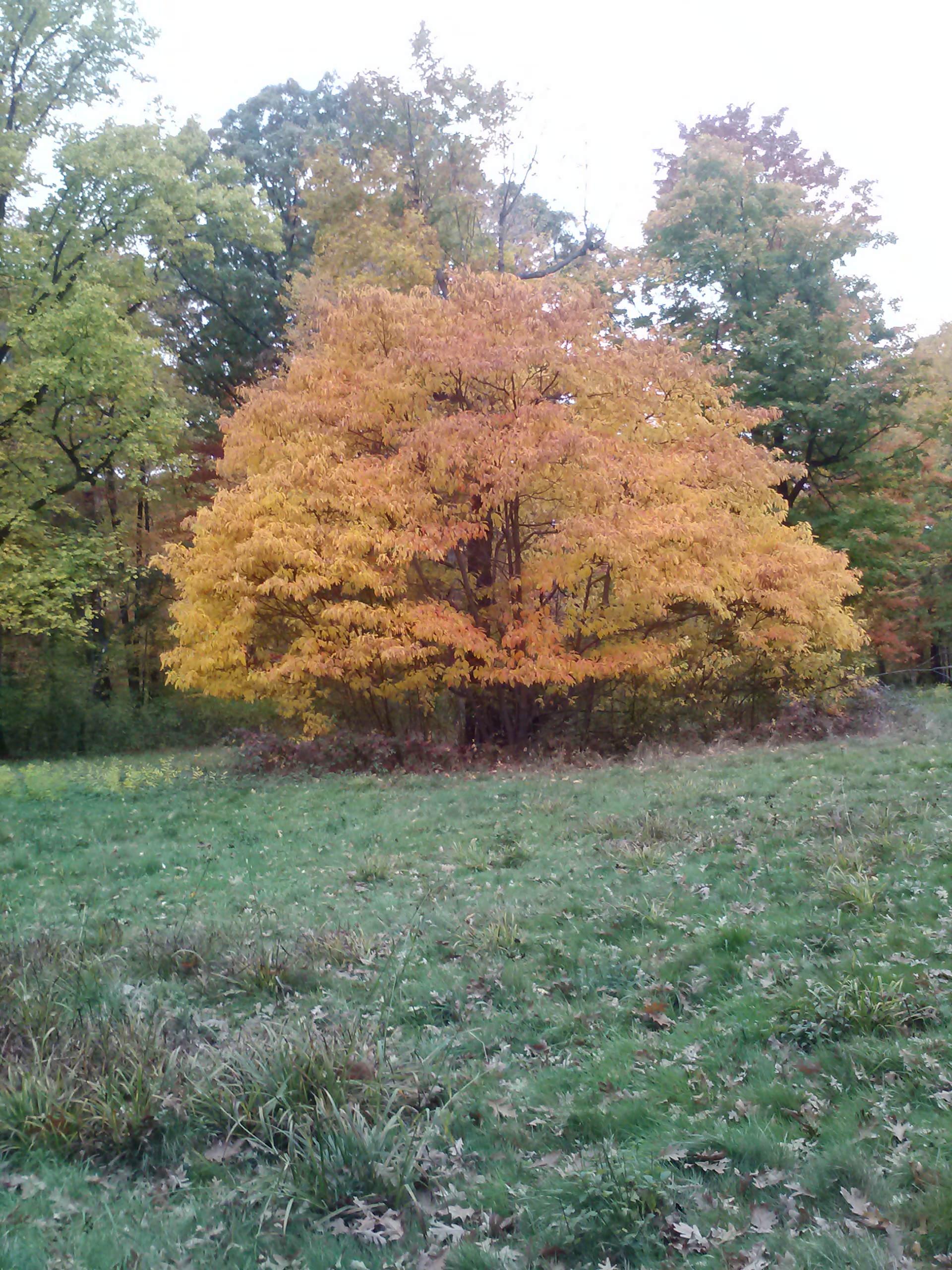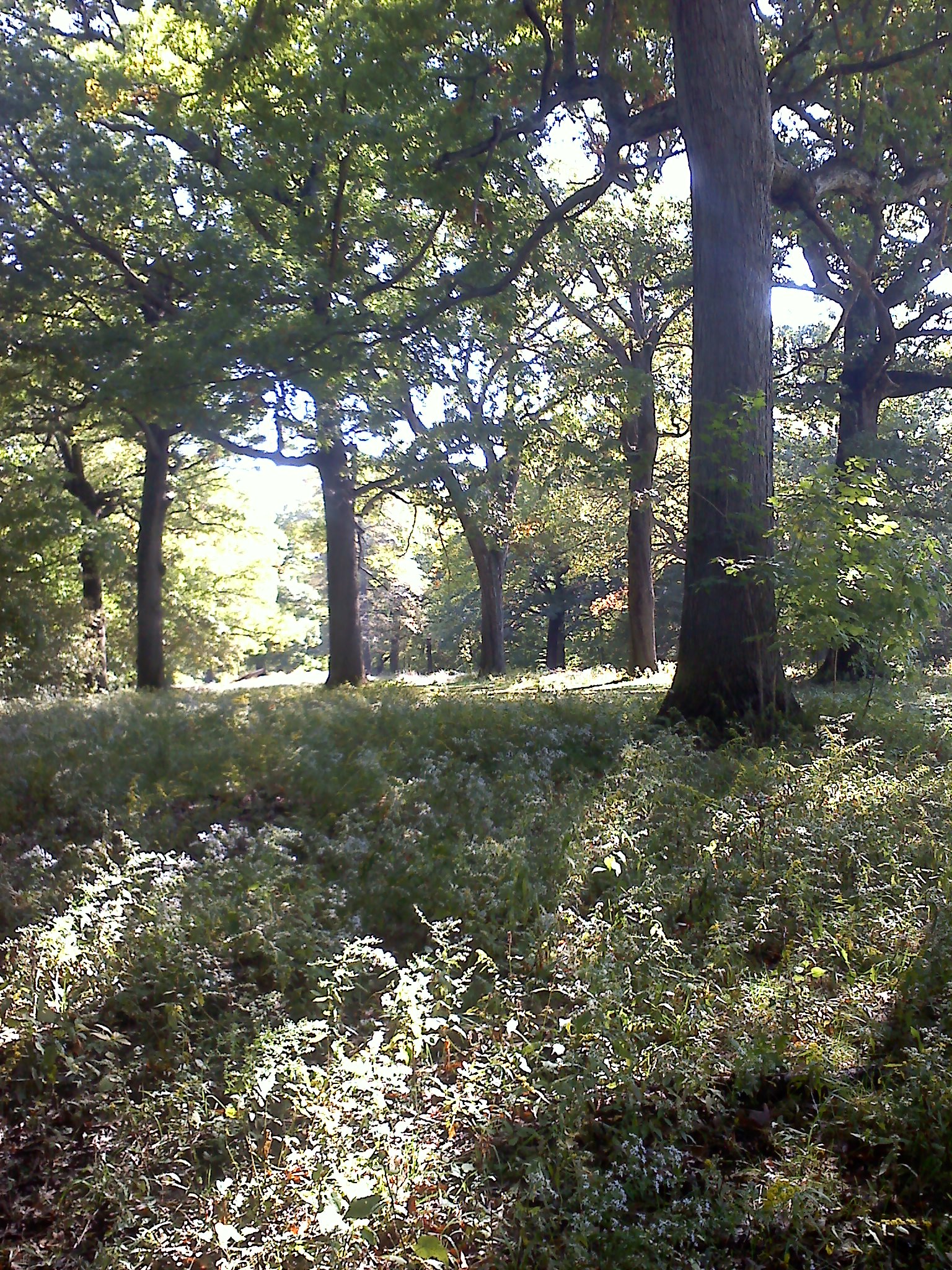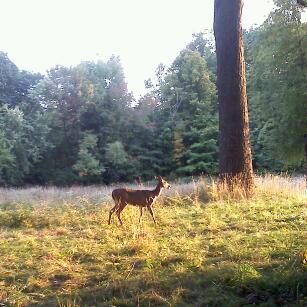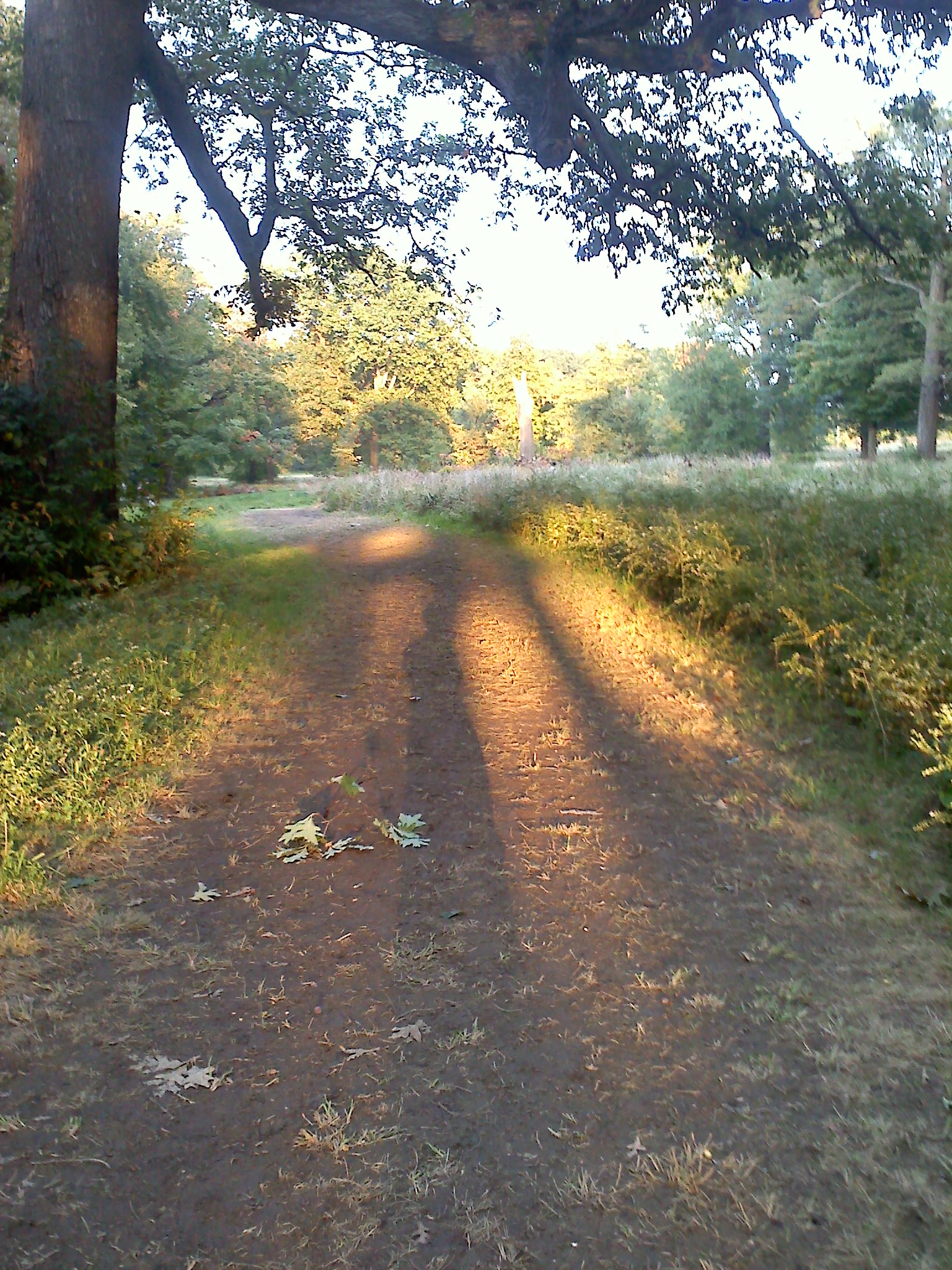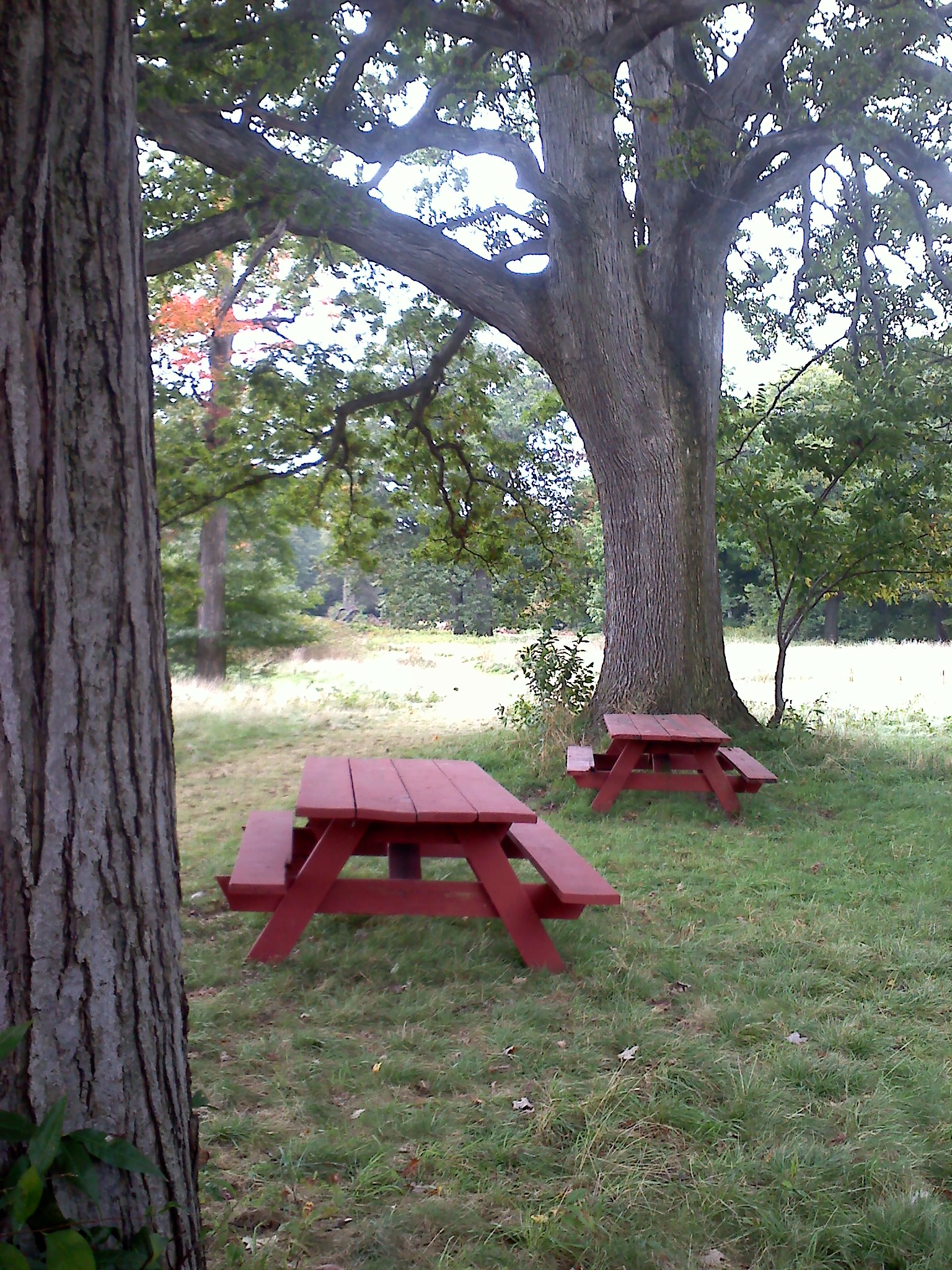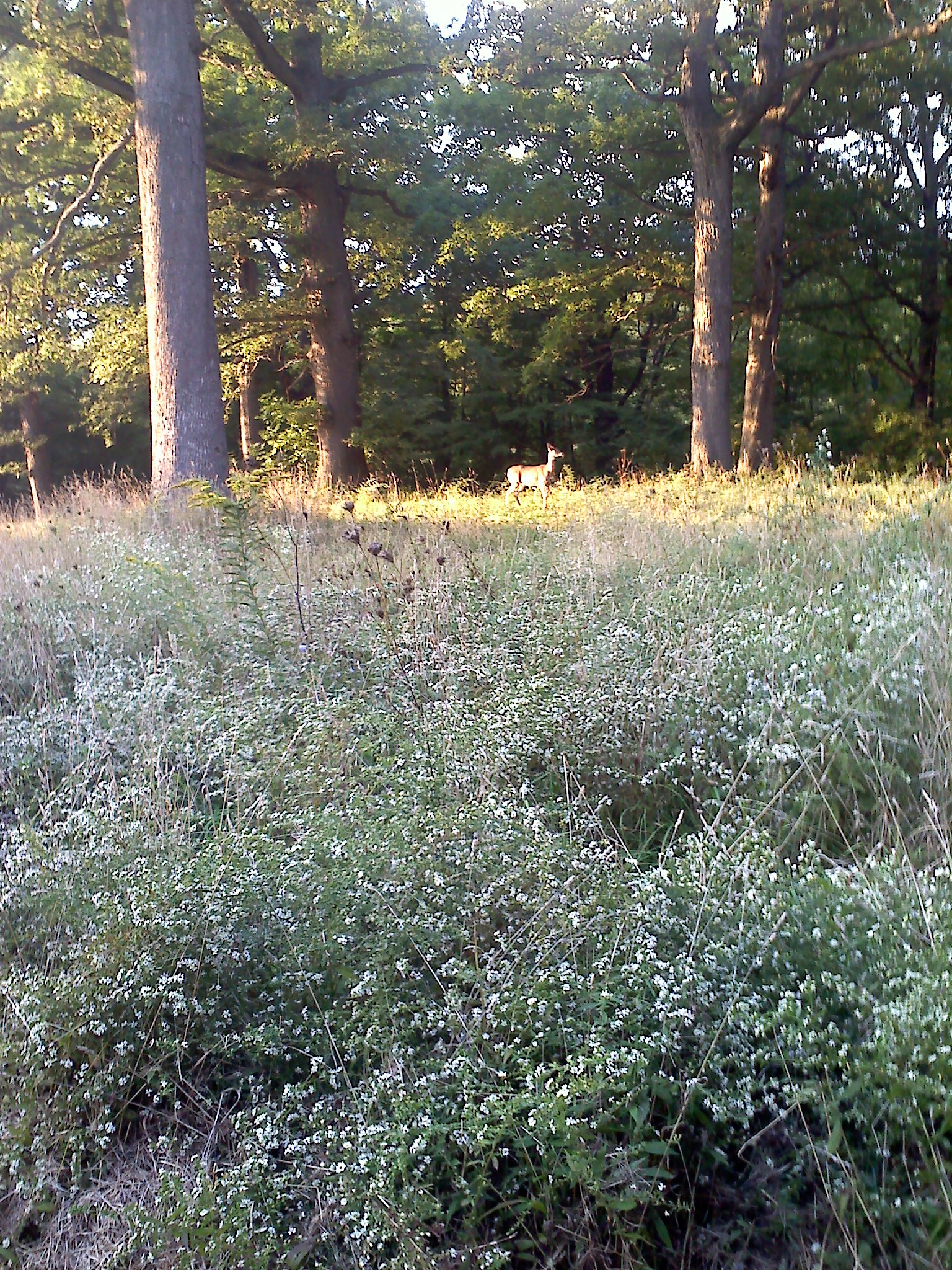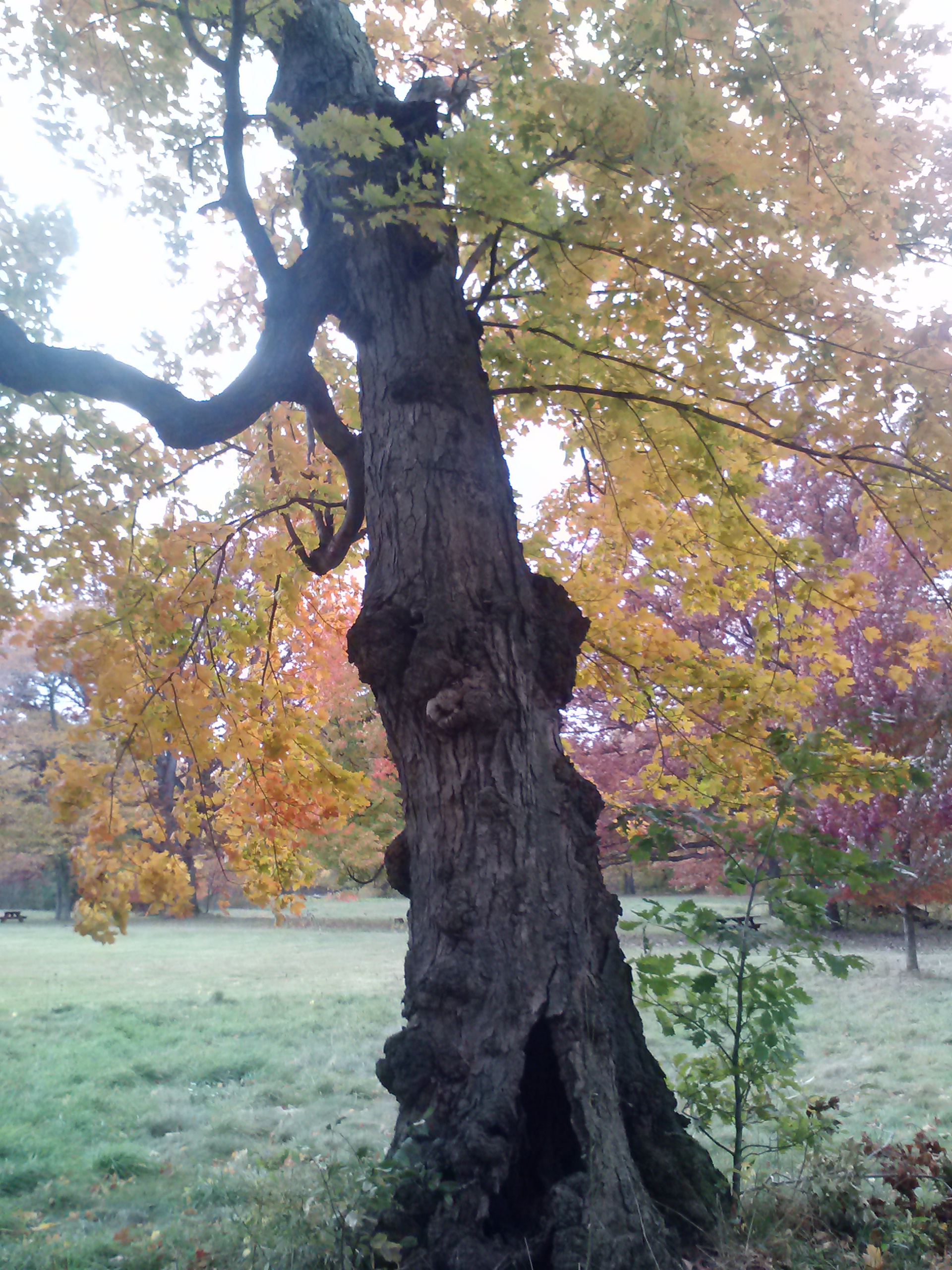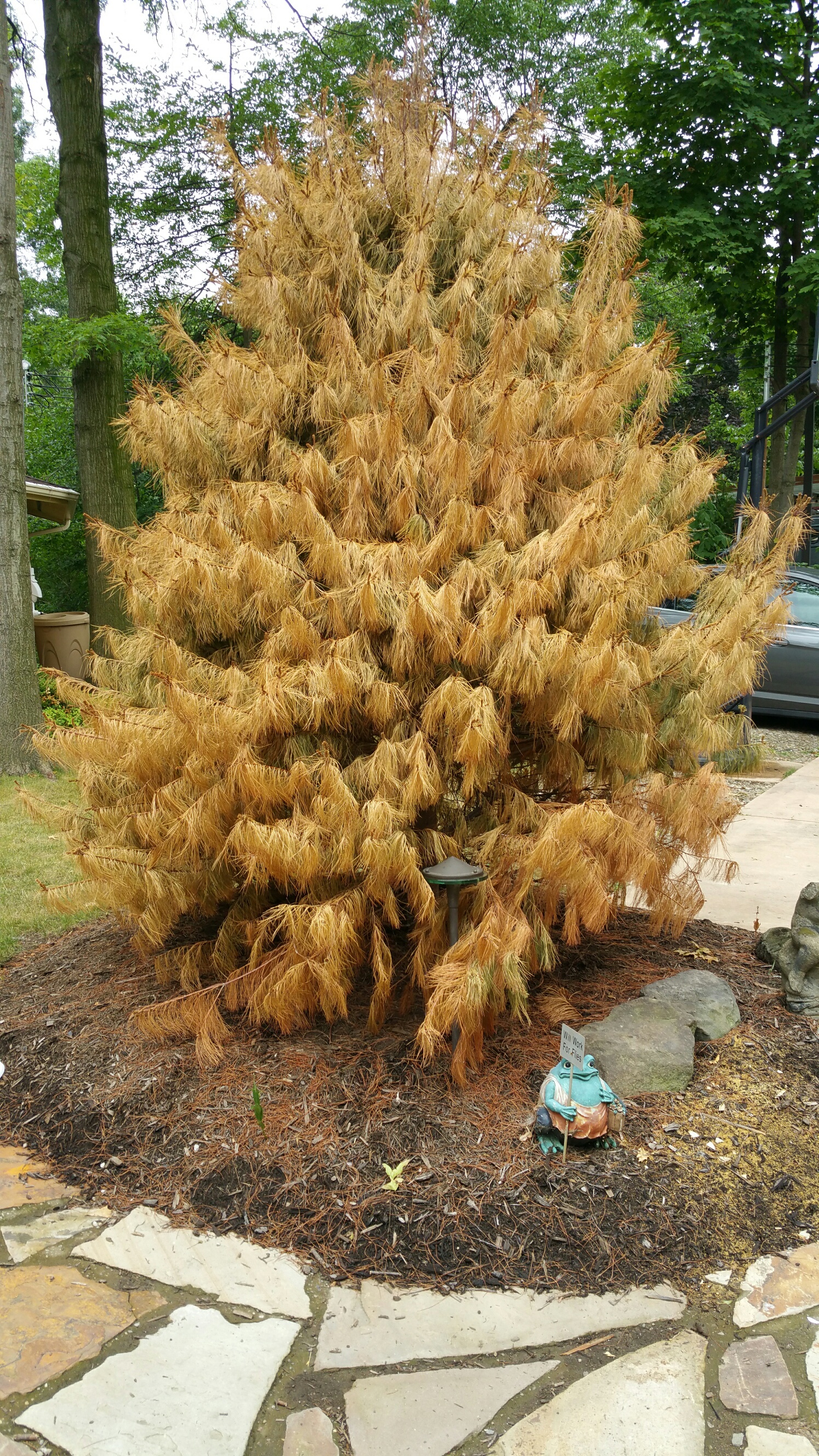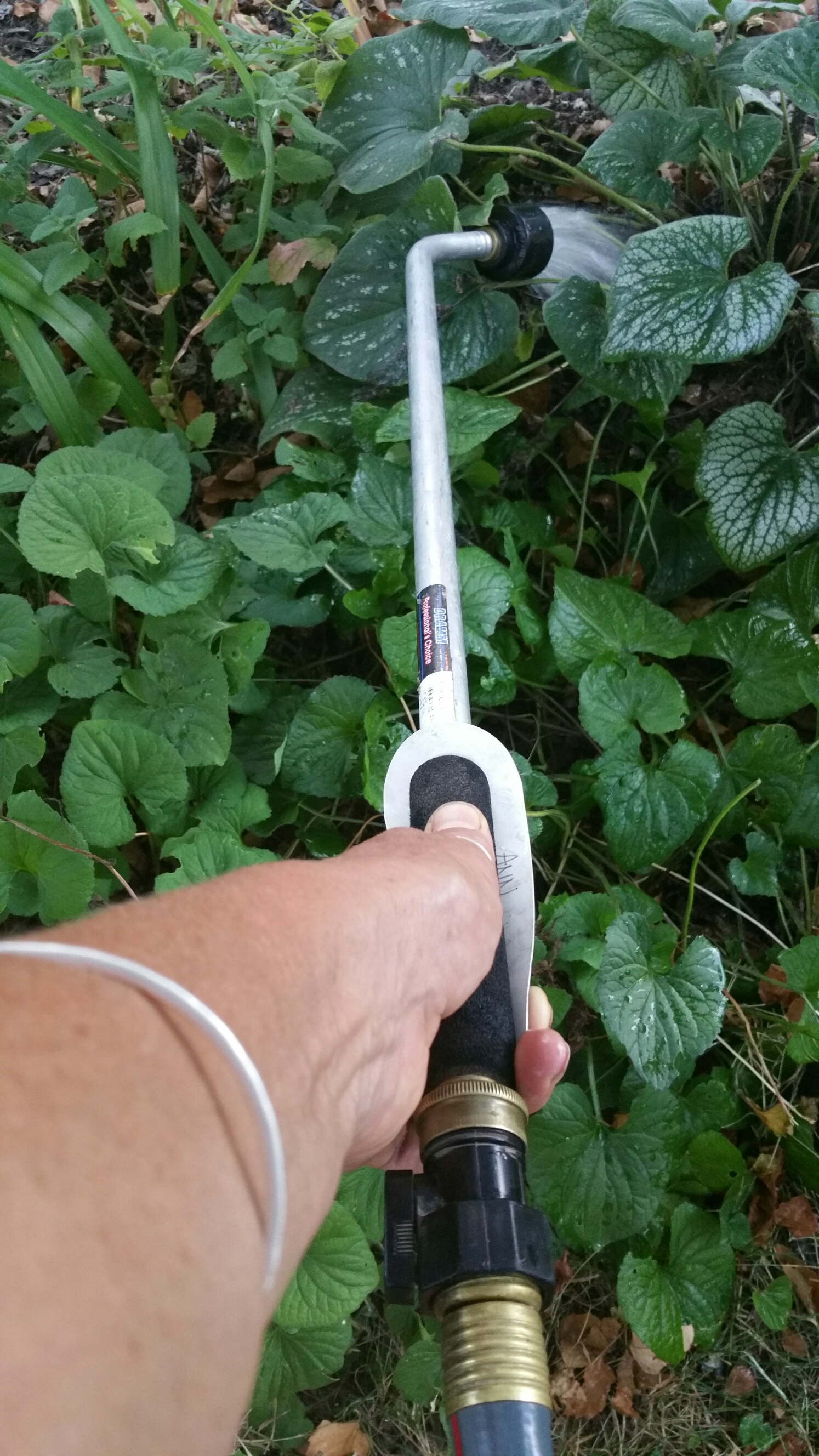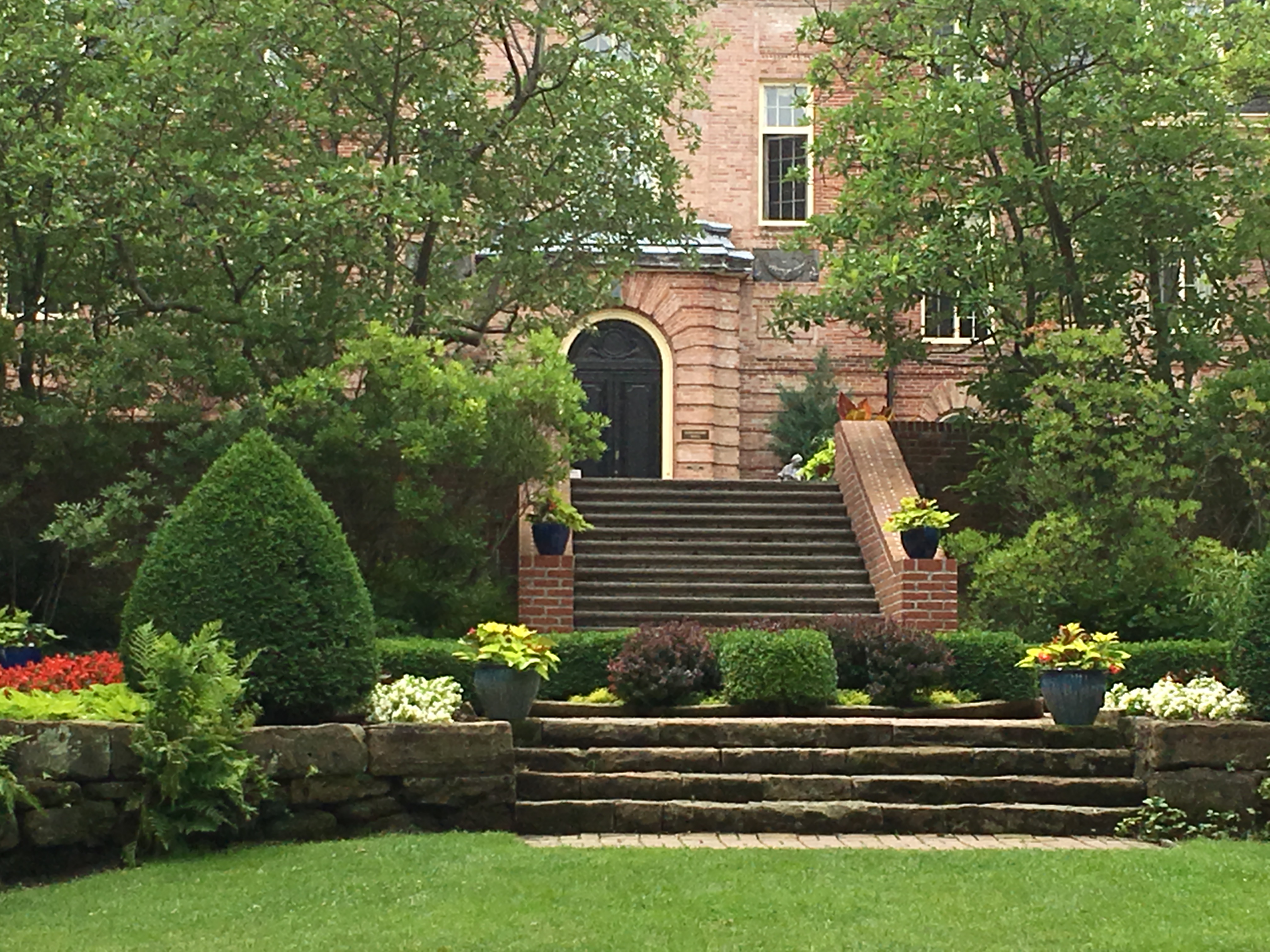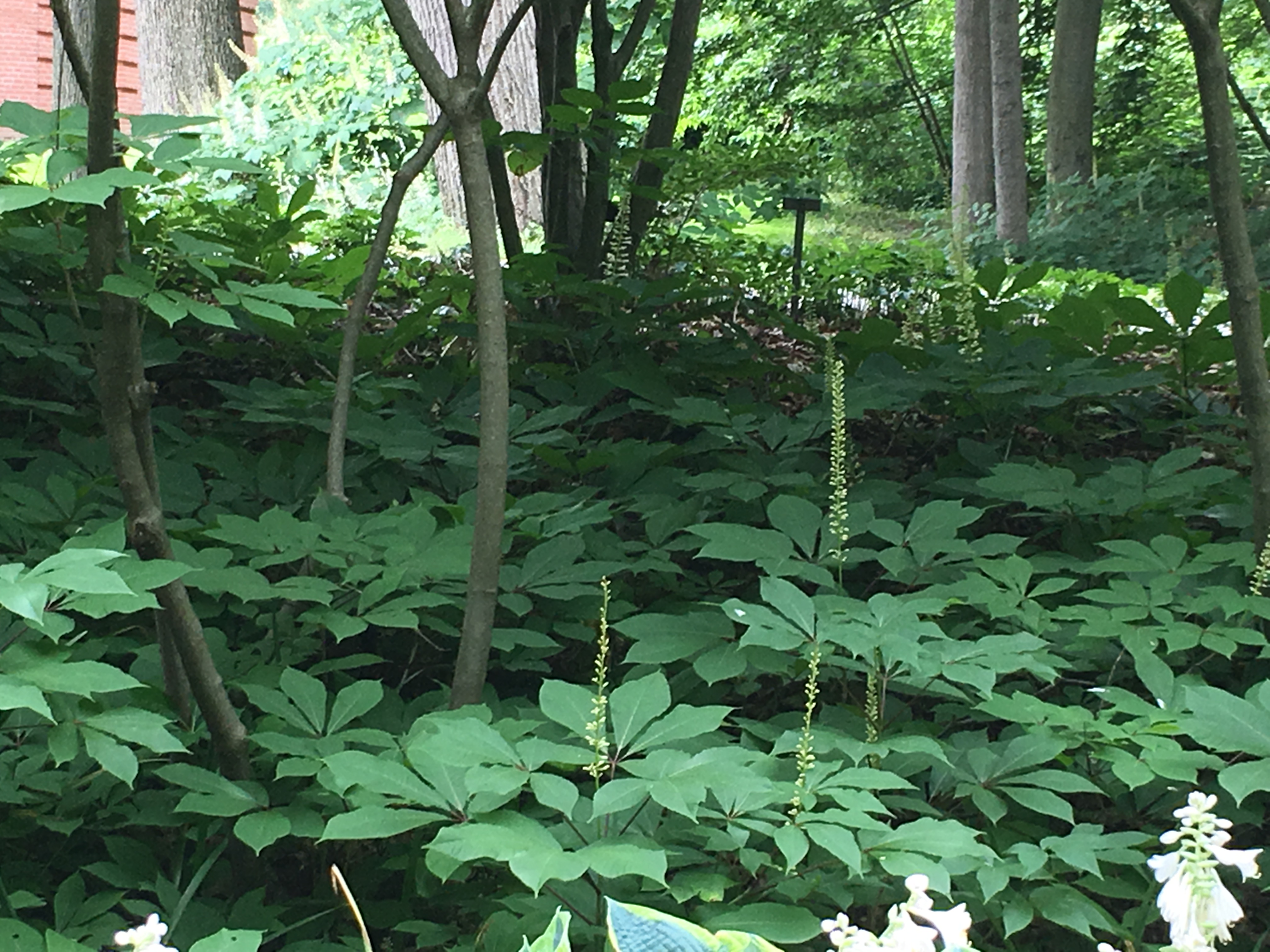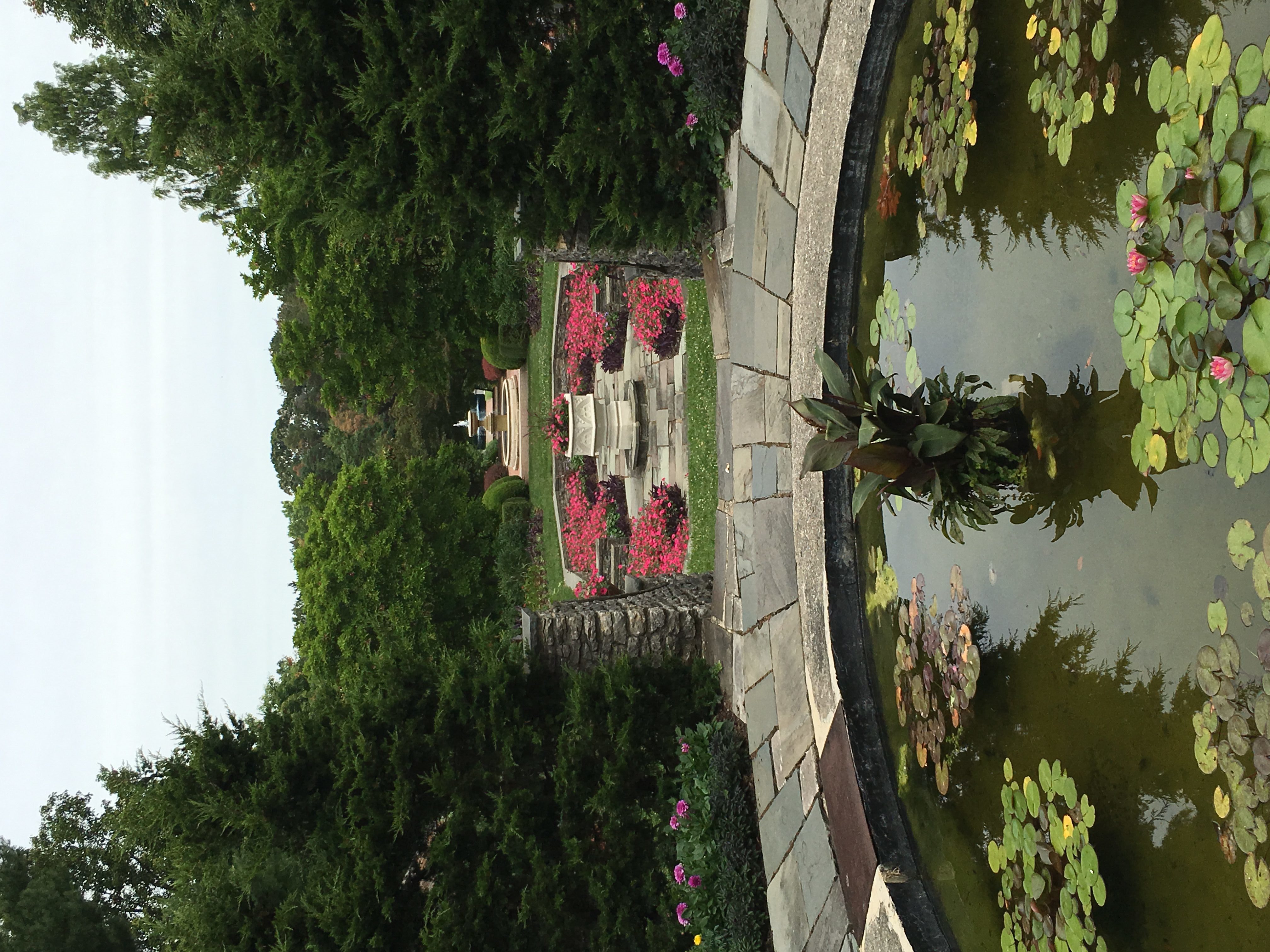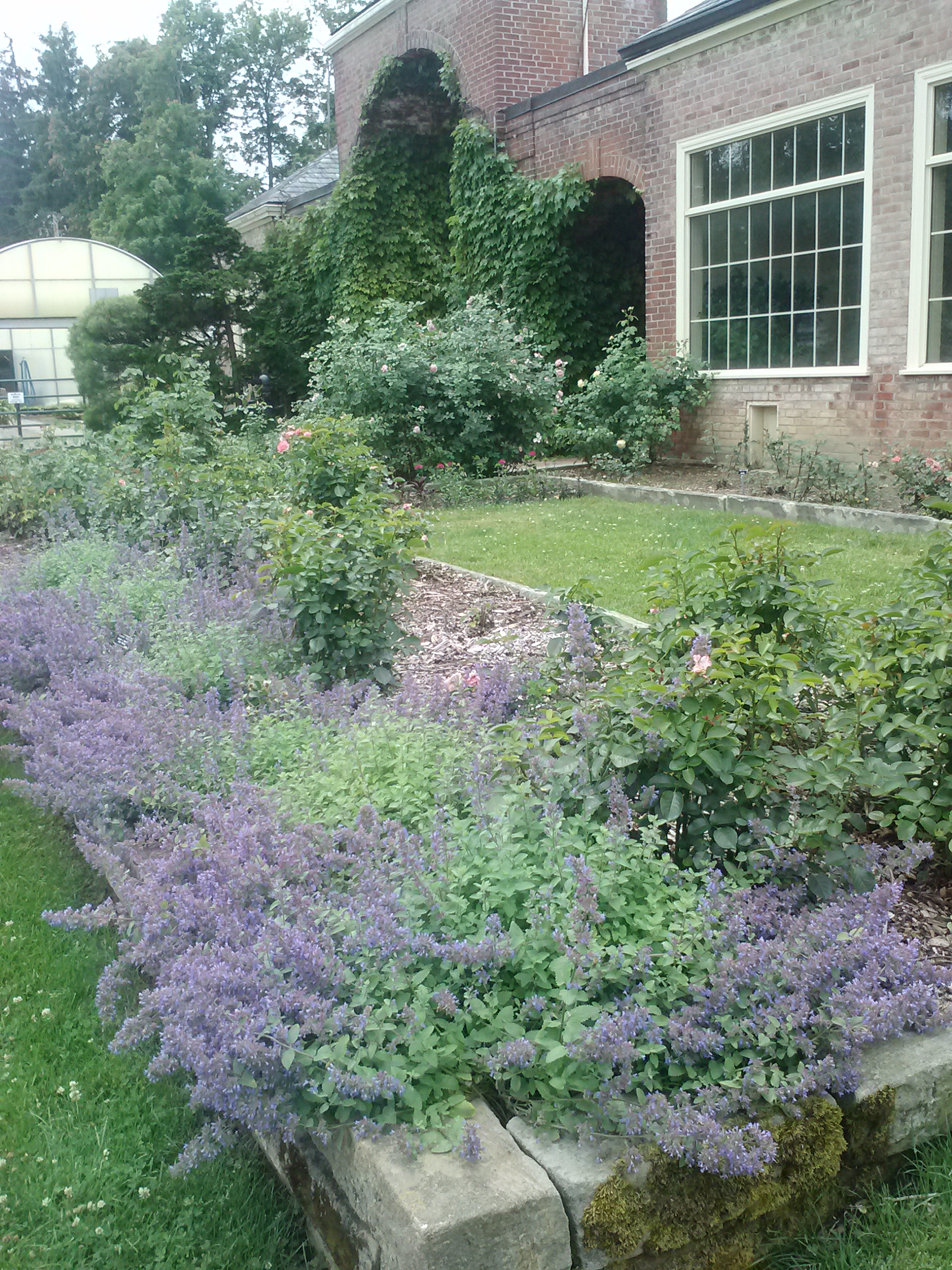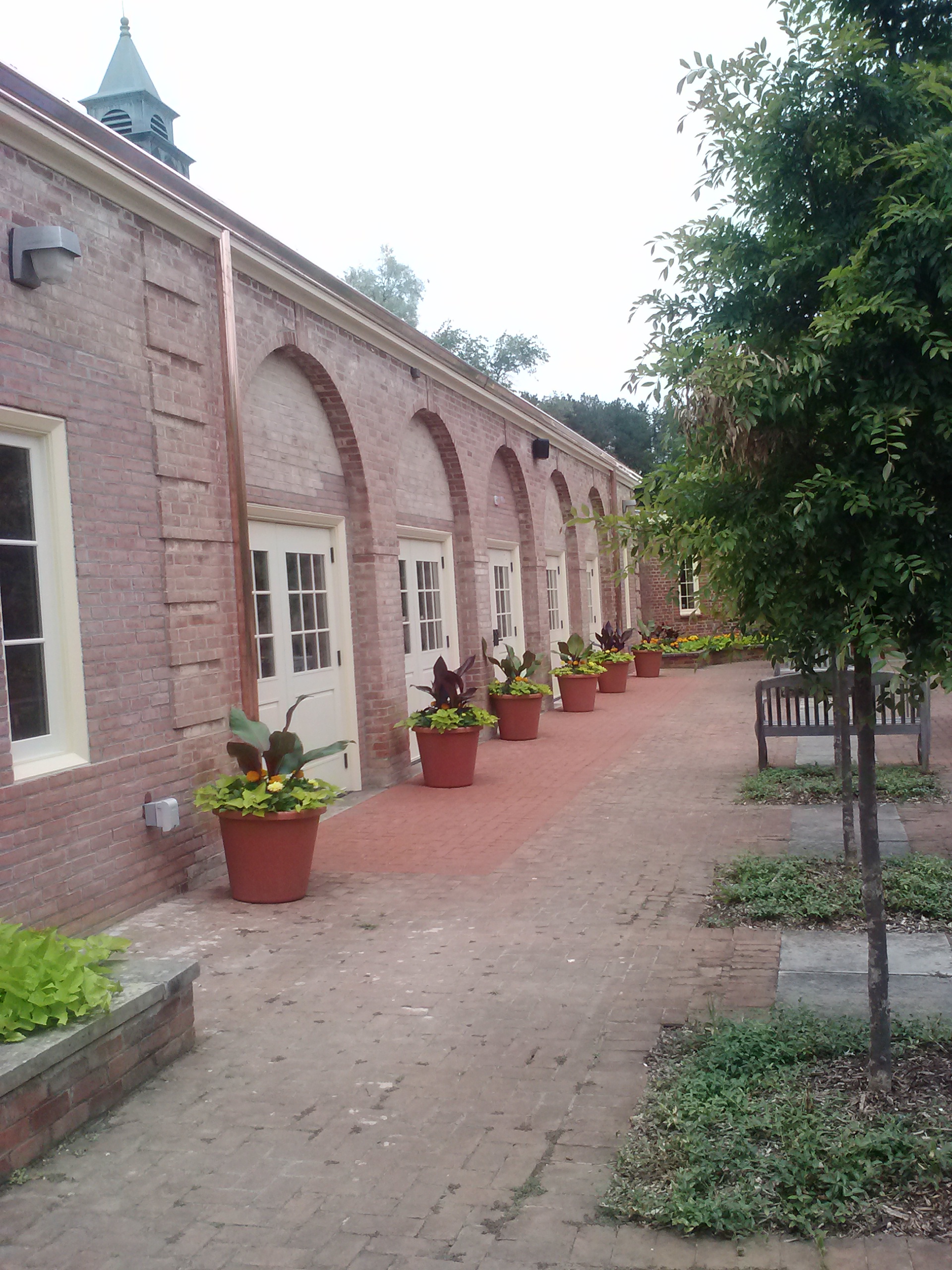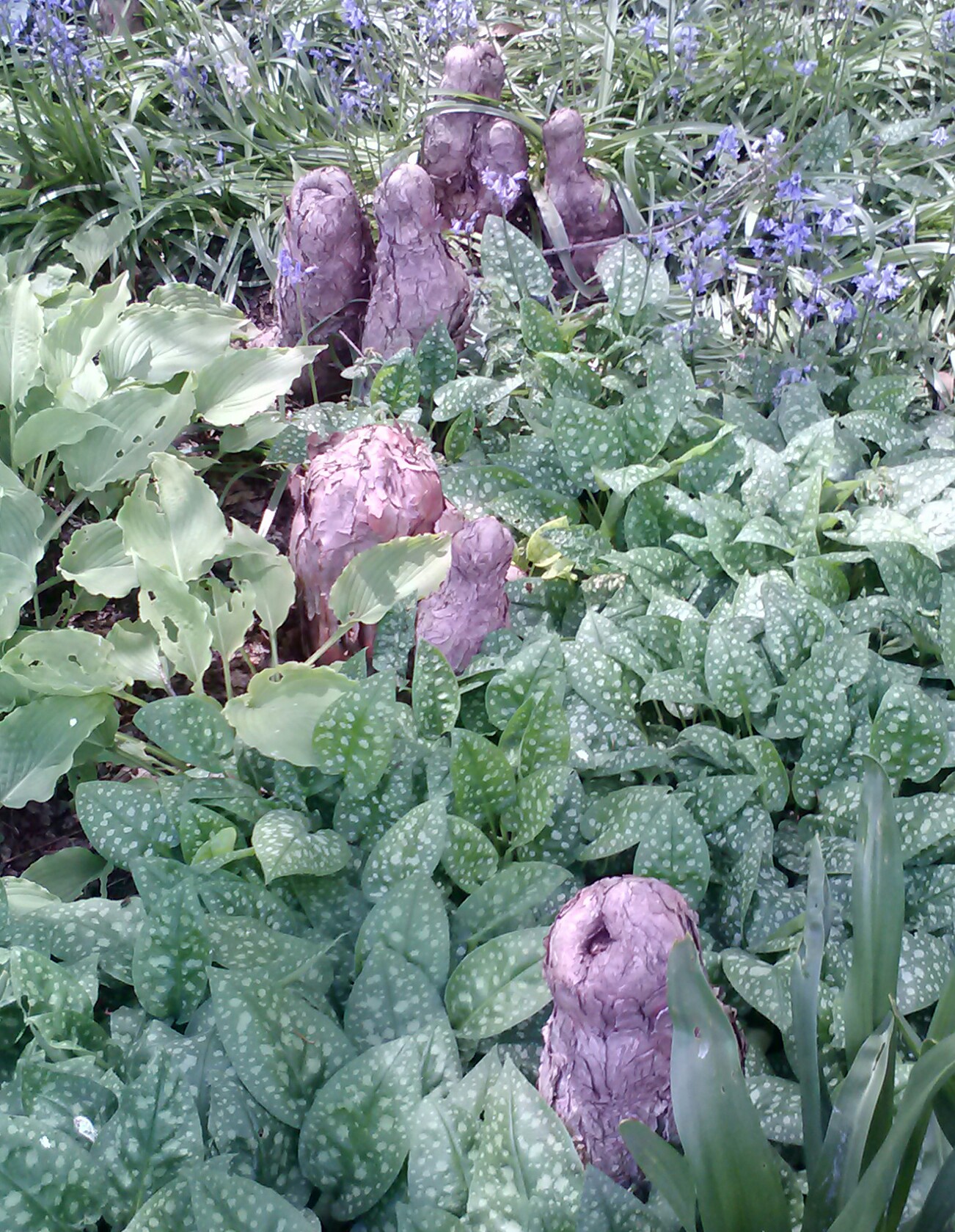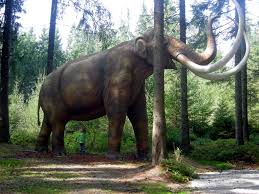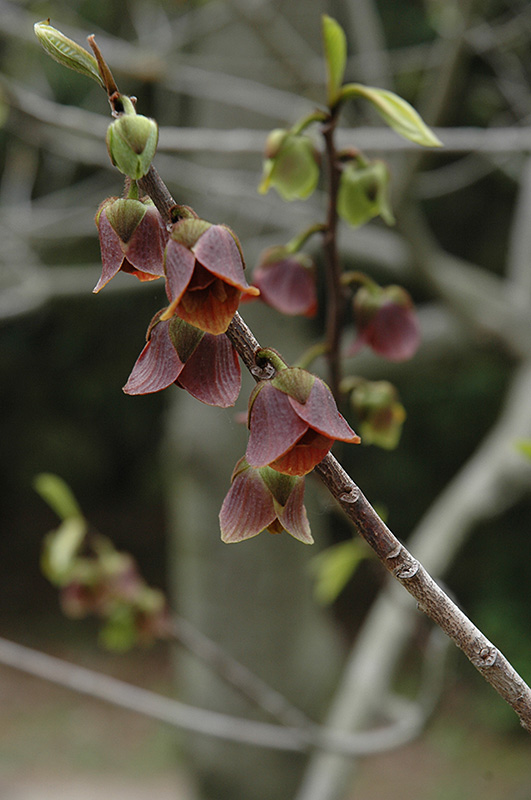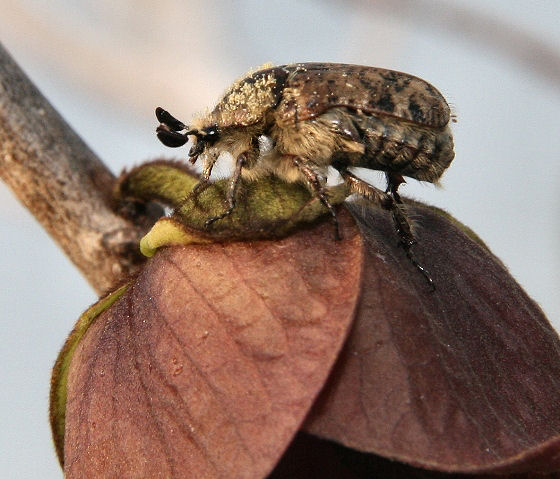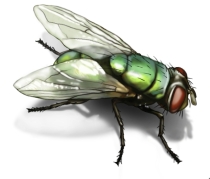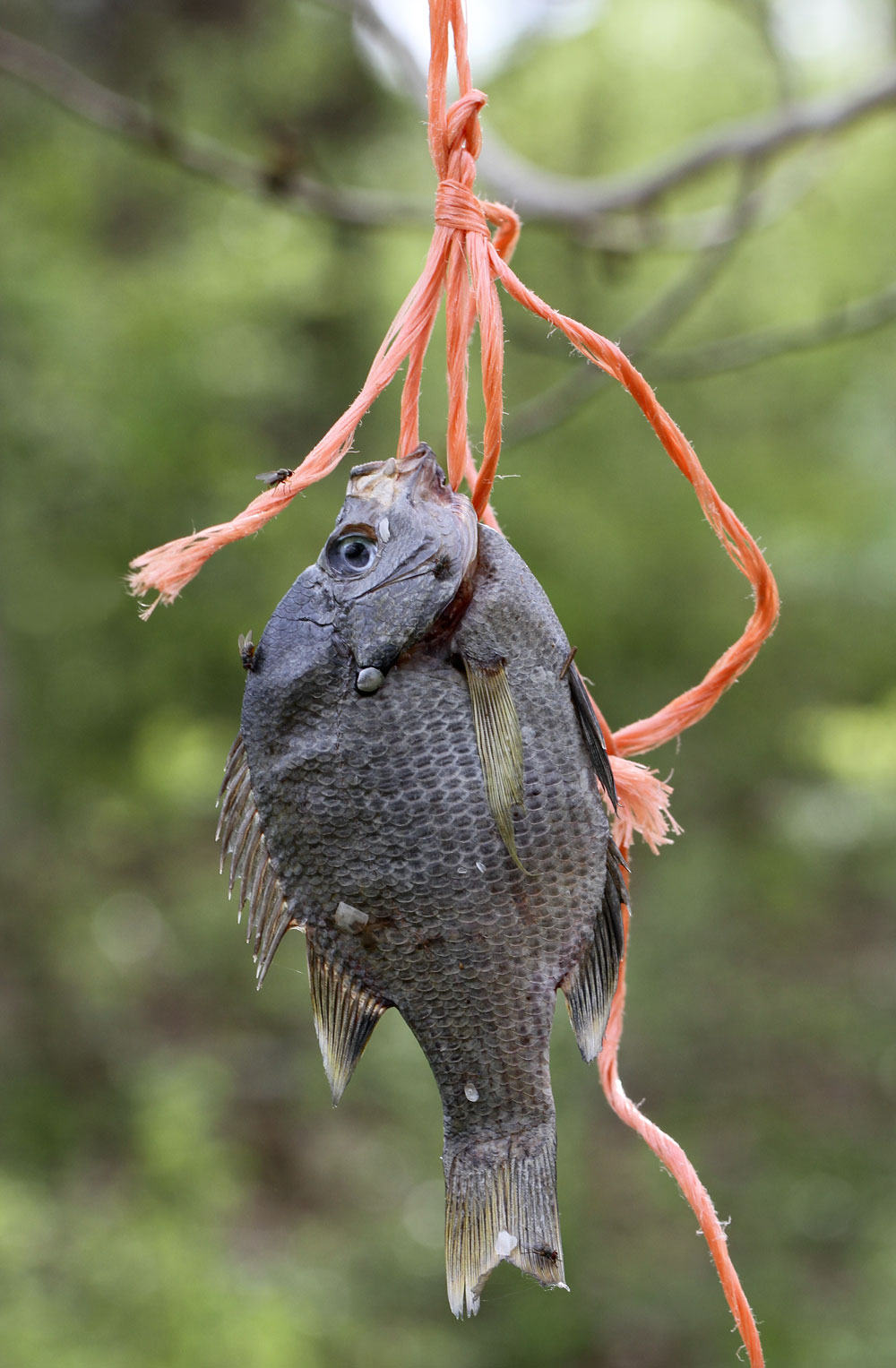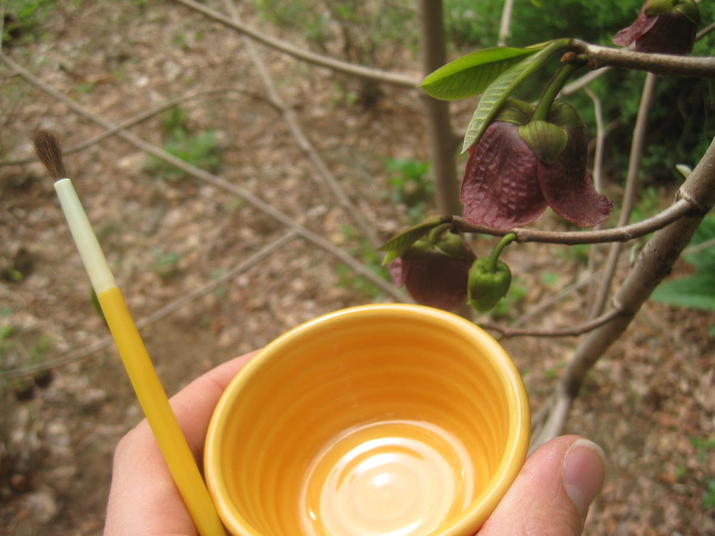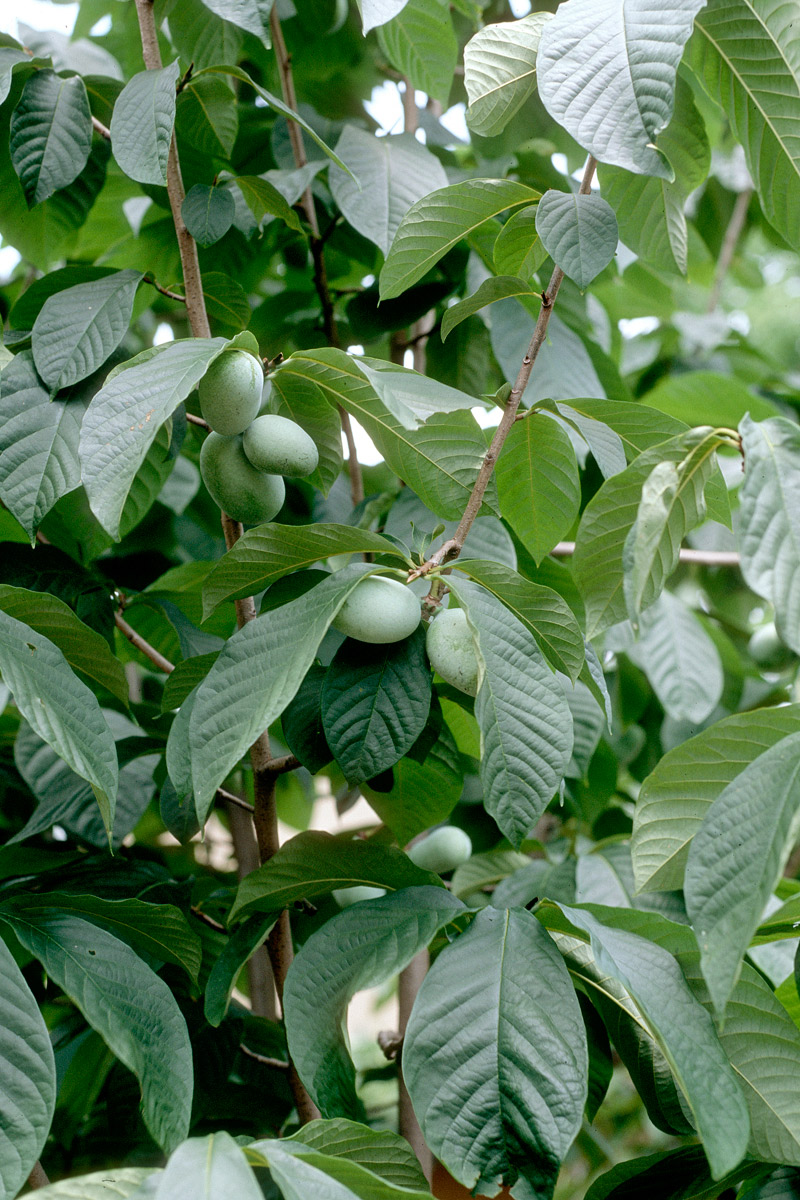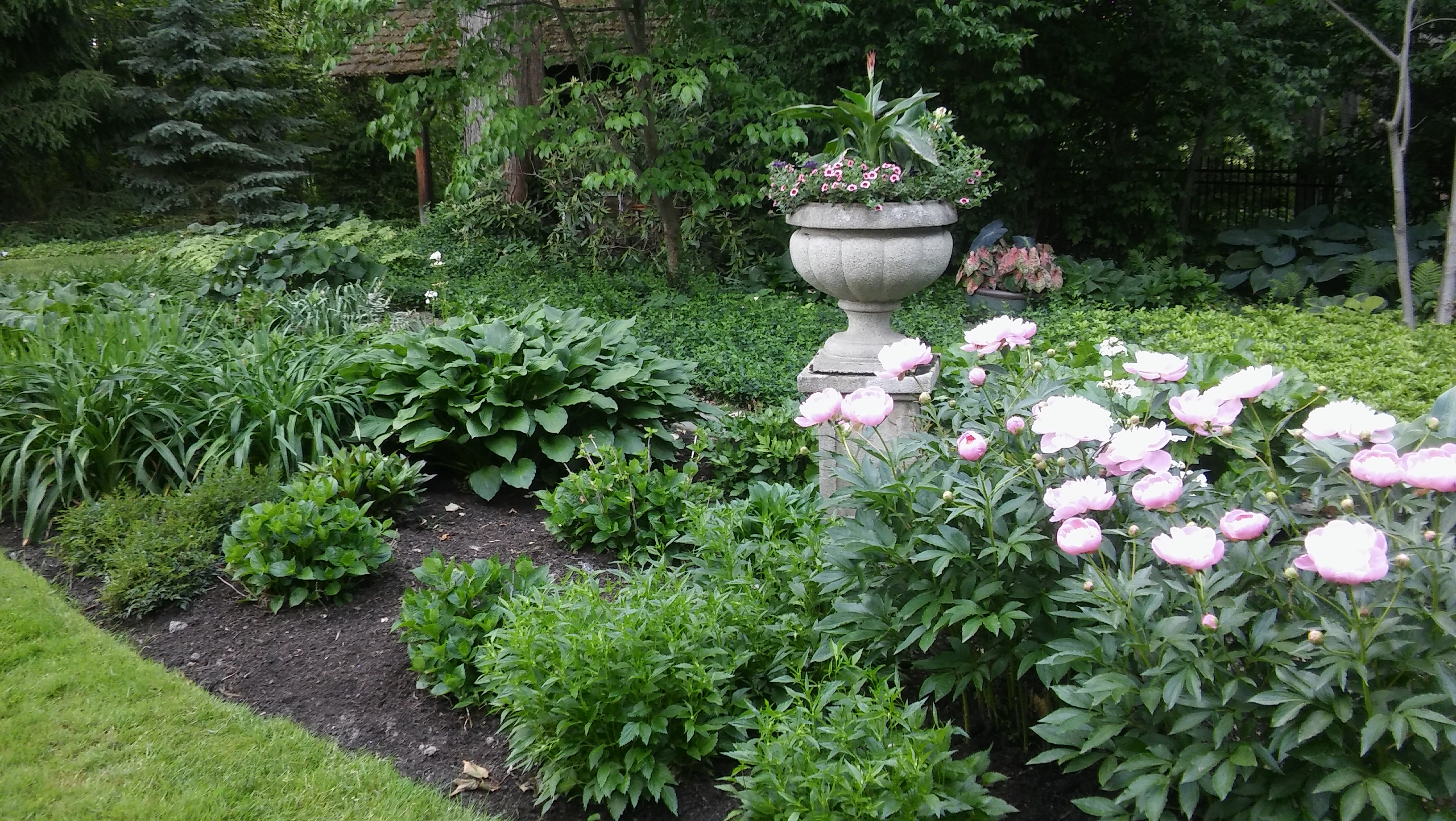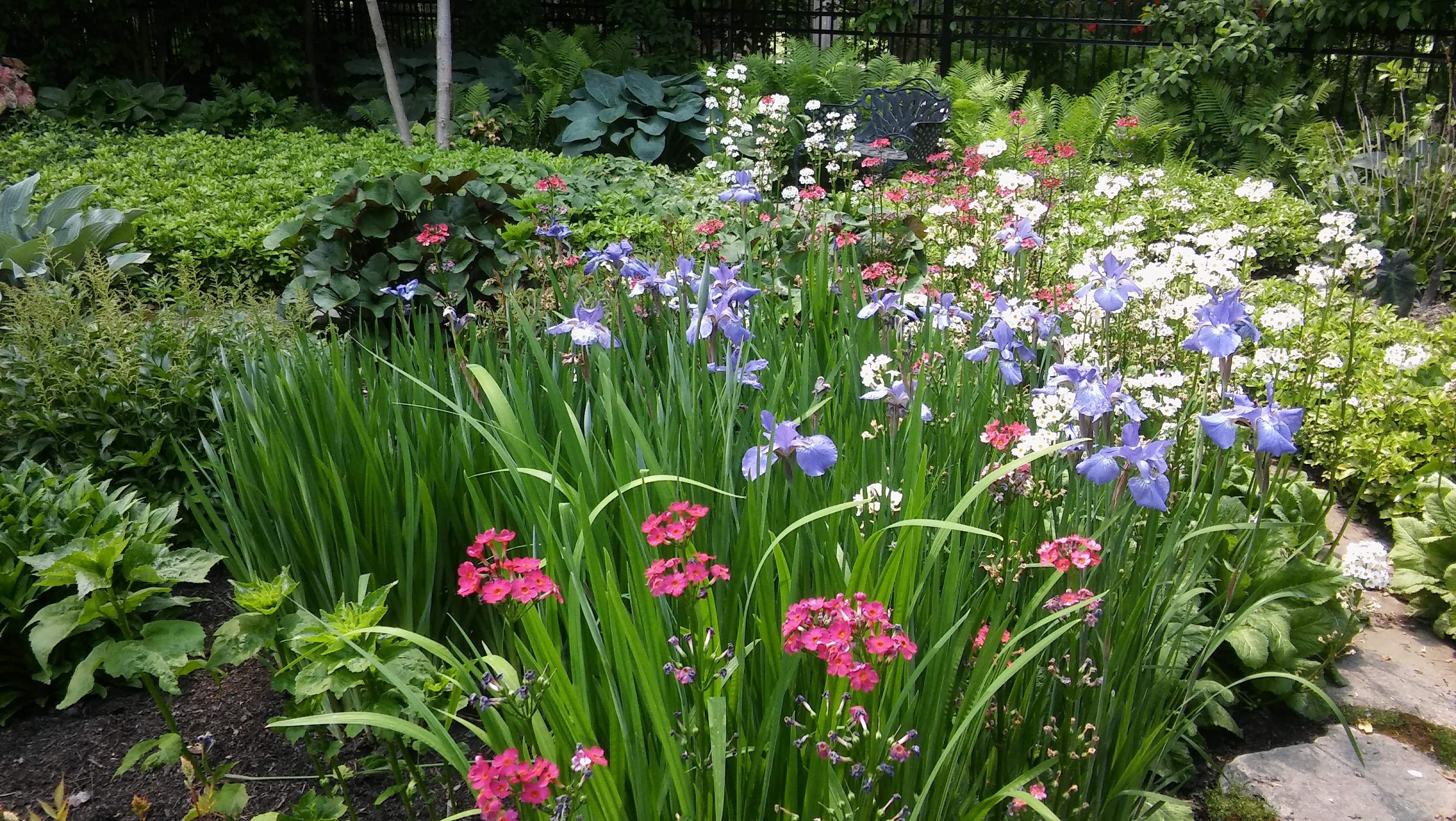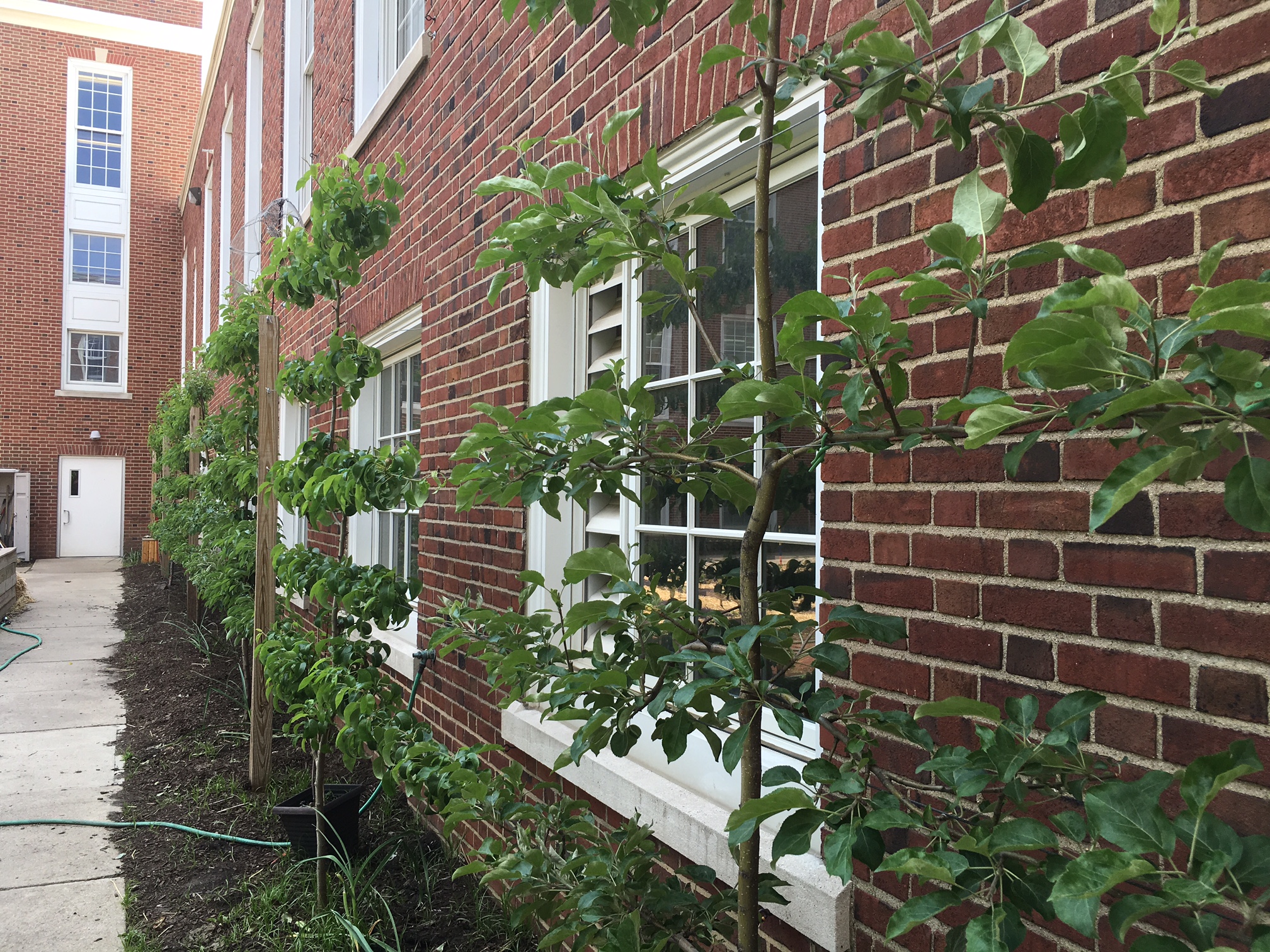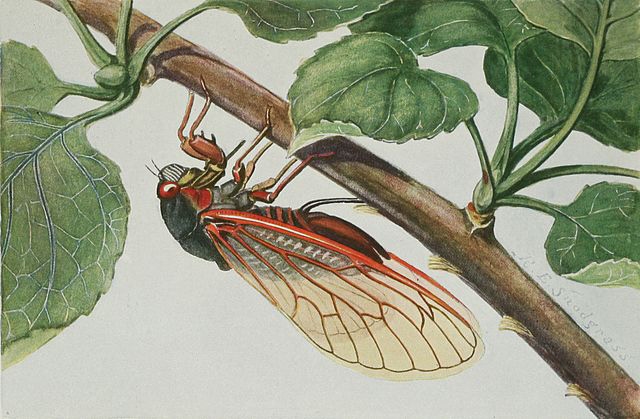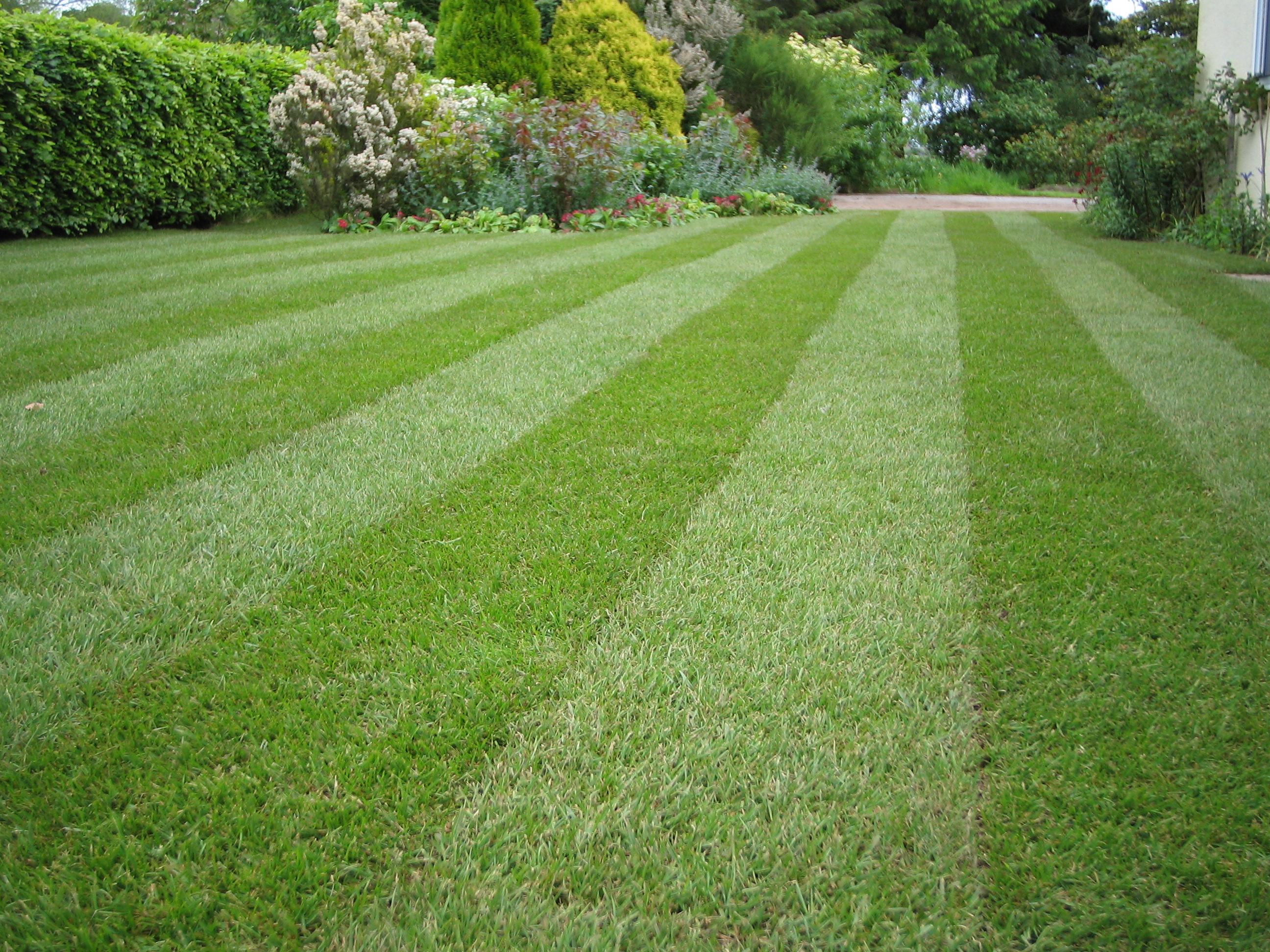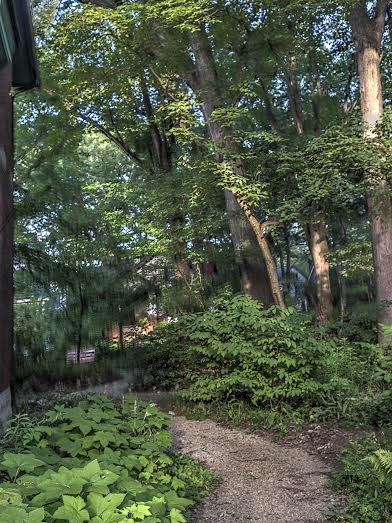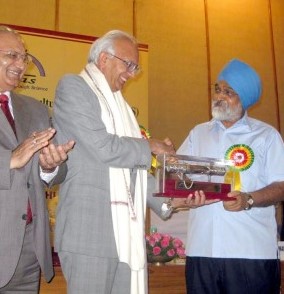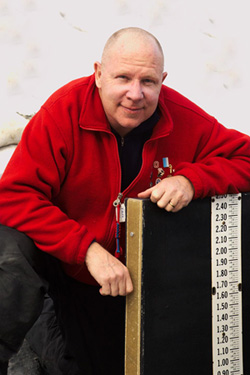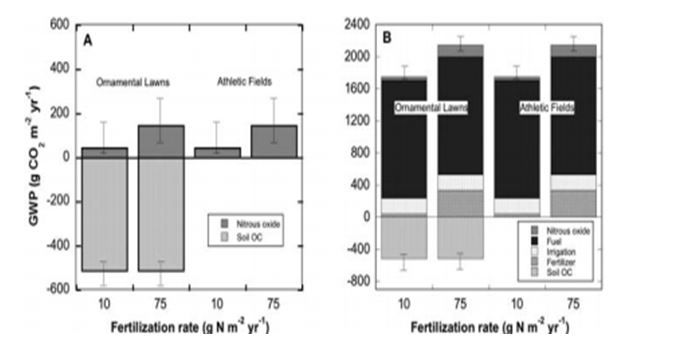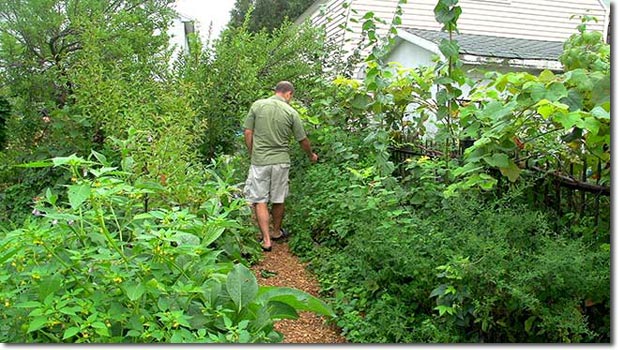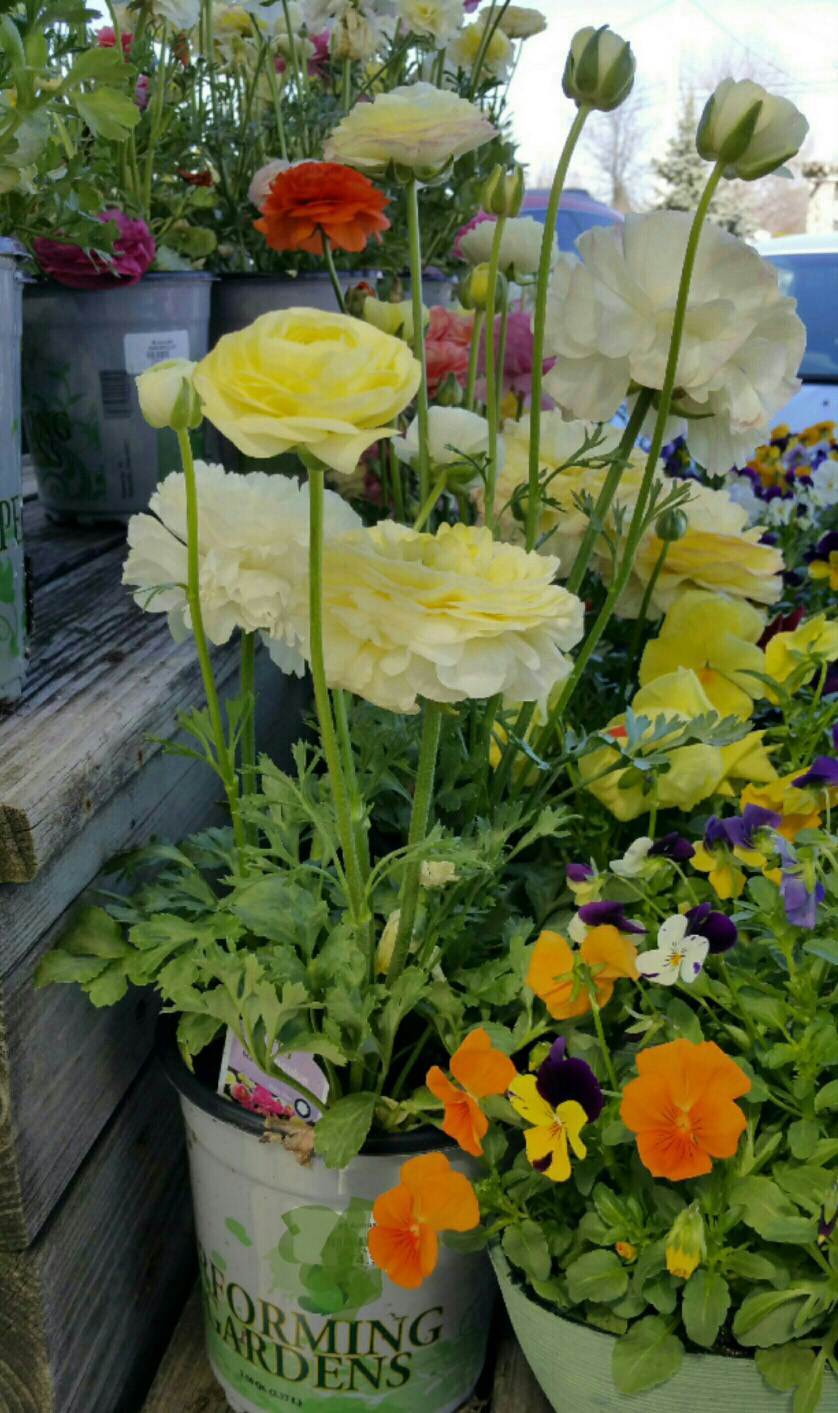by Elsa Johnson
My friend Maria Armitage says that whenever her husband Keith goes for a walk in Forest Hill Park, when he comes home, he says: “It’s a jewel.”
A few years ago the East Cleveland Parks Association (a volunteer board that works with the City of East Cleveland to help maintain the East Cleveland portions of Forest Hill Park; disclosure — I am on this board) began to become concerned about oak tree deaths occurring in two iconic areas of the park. The two areas, designed and named by A.D. Taylor in his 1936 master plan for the park, are The Great Meadow and The Meadow Vista. Both are upland oak savannahs – i.e., unique, lightly forested grasslands where oaks are the dominant species. Such savannahs were historically maintained by fire (set by man, or by wildfires resulting from lightning strikes), or were the result of grazing. In the history of the park since it has been a park, the savannah environments have been maintained through mowing.
By the time John D. Rockefeller Sr. bought the property in the late mid-century of the 1800’s, these two upland areas were pastures studded with oak trees. This was probably their beginning as oak savannahs. We do not know how old the trees in these pastures were at this time. They may have been scattered remnants of the original forests that were there in 1796 when Moses Cleaveland surveyed the Cuyahoga River site that became the City of Cleveland. Or they may have been young trees, or a mix of both. We do know that Rockefeller added a few specimen trees here when he bought the property 2/3rds of a century later, but those trees were exotic species, not oaks. We also know that the Cleveland Museum of Natural History inventoried some of the largest trees in The Great Meadow and designated some of them ‘Moses Cleaveland Trees’. What this means, in the year 2016, is that the oldest of these trees are over 200 years old, while the youngest of those original savannah trees are a minimum of 150 years old.
By any standard, old growth forest.
So when the savannahs/meadows began to lose trees – one of the first to go was a huge and spectacular Moses Cleaveland Tree in The Great Meadow, lost in 2011 – ECPA was deeply concerned, and became more so with each passing year, with the loss of additional trees, in what seemed like a ring spreading out from the site of the original losses, with Meadow Vista area suffering many, many, more tree losses than The Great Meadow.
If any area can be described as the heart of Forest Hill Park it is The Great Meadow. It is the crossroads through which all paths must pass to get elsewhere, and it is the one place in the park with an unfettered view from the eastern end of the meadow all the way through to the western end of the meadow, a distance of about half a mile. And then, from the west end (where Rockefeller once had his summer home), the view continues out over Cleveland’s east side and on, out over Lake Erie toward invisible Canada, some 50 miles away.
Since 2011 the park has lost 6 trees in The Great Meadow, most of them in one centralized area. In The Meadow Vista area the park has lost 6 to 7 trees (or more) each year, and more than one area has been affected. In one area so many trees have been lost as to profoundly affect soil hydrology. ECPA watched, worried, and wondered how to get a handle on what was going one, and what did whatever was going on mean for the future of these iconic old growth oak savannahs? It became obvious that there was a necessity to plan for the planting of new trees to ensure oak savannahs for the future. To help answer these questions ECPA established The Great Meadow Task Force which reached out to The Holden Arboretum’s Community Forester, Chad Clink. His recommendation was 1.) test affected trees for pathogens, and 2.) do a thorough inventory using a certified arborist.
Alas, ECPA is a volunteer organization funded through donations and small grants, and this looked expensive, so the task force cast about and found : The Plant Doctor, Dr. David Roberts, Senior Academic Specialist at Michigan State University, discoverer of the Emerald Ash Borer, and specialist in diseases and pests of oak trees, who volunteered to come down and spend a day looking at trees in The Great Meadow.
Much planning ensued. What information was necessary? Was there additional information that would be interesting? — That would help people be interested and want to invest in a Save-A-Tree/Plant-A-Tree program? — That would reforest the meadows and create an old growth forest that would still be there in another 200 years, for the seventh generation?
The task force began by tagging each tree with a number and locating it on a photographic map. It was decided the walk-through would look at each tagged tree and list its species, general health, and recommendations for its care, and also measure each tree’s circumference (by which one applies a formula to arrive at its diameter), the distance out from the tree of its canopy drip-line, the height of the tree, and an estimate of its age (by Dr. Roberts). By using specific calculations this information can tell one how much carbon each tree is sequestering — the task force thought that would be cool information.
The walk-through revealed that, of the old trees in the Great Meadow – a total of about 70 trees – many, if not most, are close to or exceed 100 feet in height. The largest tree has a circumference of 15 feet – but many other trees are very nearly as big around. Canopy was the most variable component measured, with trees standing in isolation having larger canopy spreads than trees growing in the proximity of an oak grouping. And Dr. Roberts estimated the various ages age of the trees as around 150 to 200 years old, which fit with their known history. He said that the trees in The Great Meadow are largely in good health, and what a pleasure it was to visit such a collection of healthy old growth trees.
All of this information is in the process of being brought together in a spreadsheet. It will be used to seek funds for the necessary maintenance of these valuable trees in their unique and iconic savannah environment, and also for the planting of new trees so that the oak savannahs of Forest Hill Park remain the inspiration of exclamations like : “It’s a jewel!”
Note: ECPA is hoping to get Dr. Robert back for a return visit to study the diseases and/or pests affecting the trees in The Meadow Vista.
Note : To learn more about ECPA and Forest Hill Park go to ecpaohio.org
How to Measure the Height of a Tree (without climbing it).
You will need a stiff equilateral triangle with a drinking straw taped to one side of it which you will use to look through, and a 100 foot measuring tape. You will need two people. One person will stand at the trunk of the tree holding the zero end of the tape. The other person will walk away from the tree spooling out the tape. When she gets out to what she thinks is the tree’s height, she will stop, take the triangle, and at eye level, line the horizontal bottom of the triangle parallel to the ground and the vertical side of the triangle parallel to the trunk of the tree. Looking through the straw, she will look for the top of the tree. When she can see where the tree leaves touch the sky, she will note the distance on the measuring tape (she may have to move and try this several times). The height of the tree is the distance measured on the tape plus her height at eye level added to it. This is fun to do.
